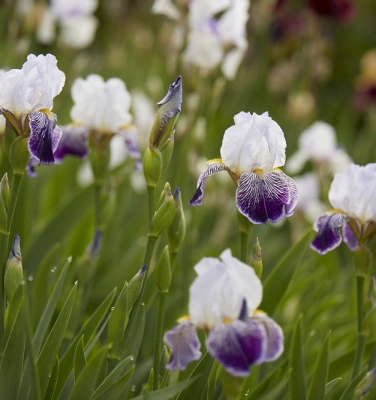

The iris is invaluable in late May as it blooms when bulbs are on the wane and before herbaceous planting has really taken off.
Iris—or “rainbow” if you speak ancient Greek—is hugely varied, not only in color: It grows in the desert, it grows in a pond. It prefers sun, it prefers shade. It won’t tolerate competition, it’s a good mingler.
The iris is invaluable in late May as it blooms when bulbs are on the wane and before herbaceous planting has really taken off. With about 300 different species, the iris is one of the most visually striking plants in the garden with its perfectly straight spears of foliage and undulating petals.
Iris offers a cornucopia of cultivars, falling into categories such as bearded (I. germanica), beardless Dutch (I. hollandica), pond (I. ensata), and Siberian (Iris sibirica). The most iconic is the tall bearded iris, so highly prized that the French monarchy grabbed it early on as part of their own branding and called it the fleur-de-lis.